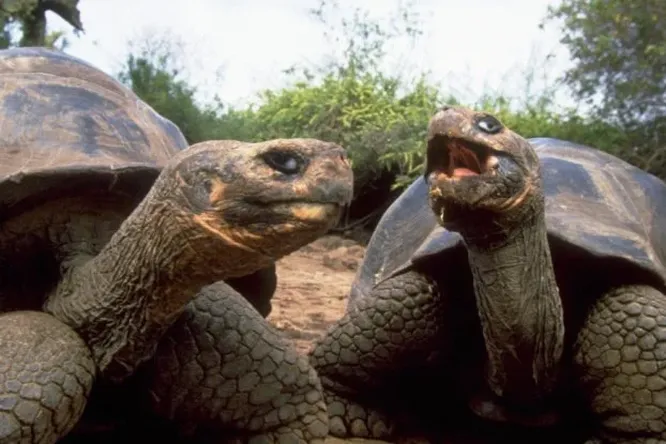A new incredibly thorough study of exothermic quadrupeds — reptiles and amphibians — gives experts a new idea of the reasons why cold-blooded animals have such a longer lifespan compared to their size.

This is the most comprehensive study of longevity and aging ever published: 114 different scientists studied 107 different wild populations covering 77 different species. The data for decades on the methods of thermoregulation of animals, ambient temperature, distinctive features and pace of life are summarized and analyzed.
Of the 30 known vertebrate species that can live up to 100 years, 26 are ectotherms, and therefore scientists sought to find out how these animals manage to avoid inevitable death for so long.
The study revealed many findings, including a link between physical or chemical traits that protect species (such as hard armor, spikes, shells or a venomous bite) and delayed aging. The physical traits that protected the species were also associated with a longer lifespan.
Technically, they are known as protective phenotypes, and they can make a big difference.
“These various protective mechanisms can reduce animal mortality over several generations,” explains evolutionary biologist Beth Reinke from University of Northeastern Illinois. “Thus, they are more likely to live longer, and this may change the landscape of selection between generations for the evolution of slower aging.”
“It sounds dramatic to say that some species do not age at all, but basically the probability of their death does not change with age after they have stopped reproducing”
If an animal has a one in 100 chance of dying at the age of 10 and a one in 100 chance of dying at the age of 90, this is a slight aging. For the average resident of a developed country, for comparison, the chances are one in 2500 at the age of 20 and one in 24 at the age of 80.
Slight aging was observed in at least one species in each group of ectotherms, including frogs, salamanders, lizards, crocodiles and turtles.
However, the study did not confirm another hypothesis: relying on external temperatures to regulate body temperature (as cold-blooded animals do) and the associated lower metabolism were not a guarantee of a long life. The team found that exotherms can live much longer or much shorter compared to endotherms of similar size (warm-blooded animals).
This change in the rate of aging and life expectancy was much greater than in birds and mammals. Researchers have identified slowly aging wild turtles: it was the only species studied in which lower metabolism was associated with slower aging and longer lifespan, and it was the species in which the protective phenotypic effect was strongest.
“Perhaps their altered morphology with a hard shell provides protection and has contributed to the evolution of their life histories, including slight aging and longevity”
Ann Bronikowski is an evolutionary biologist at Michigan State University.
Comparative phylogenetic methods were applied to data from animals that were captured, tagged, released back into the wild and observed.
The research detailed in this study is likely to prove useful in the future in every way, whether it’s studying the patterns of aging in humans or working on efforts to preserve cold—blooded animals – and this partly depends on the breadth of time. covers.
In addition, there are many more aspects worth paying attention to after the study: the team wants to see how soft-shelled turtles and hard-shelled turtles differ in terms of their aging, which may be enough to more clearly identify the causes of this phenomenon.
Nathnennya: www.popmech.ru
